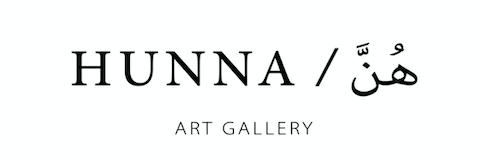I met Razan in 2019 in her studio space at the School of Visual Arts in New York City. I was seeking GCC identifying artists for the purposes of finding nuance, narratives, and stories from the region I grew up in. The search led to Razan and her art depicting powerful forms of storytelling and raw emotion. Her work throughout the years continues to be honest and possesses a candid intensity allowing for the ability to see lived experiences and conceptual interpretations through her eyes.
Razan’s visual art possesses the ambitious goal of translating complex ideas to people and spaces around her---she strives to create a meaningful connection with her audience. In addition to her work’s complexity, Razan finds value in the aesthetics behind her work and is mindful of presentation, believing the impact and power it can have on viewers. Her work is rooted in connectivity, between herself and her subject, her surroundings, the mediums she chooses, so much so that it encourages onlookers to think and most importantly feel.
Born and raised in Kuwait, Razan completed her BFA with honors from the School of Visual Arts in New York City and is now pursuing her MFA at CalArts in Los Angeles. Outside of schooling Razan has an impressive variety of artistic accomplishments including participating in solo and group shows in Los Angeles, New York City, and Kuwait, giving artist talks at Asia Society NY and the Arab Conference at Harvard, curating exhibitions in NYC and hosting studio visits for Sotheby’s Masters students. She has also been featured in TIME magazine and Harpers Bazaar Arabia, as well as several podcasts and interviews internationally.
In approaching art as a modality to conversation, her career began with the controversial pieces titled “Daesh”, consisting of 100 portraits sized 8x10 inches of ISIS members. The process of creating these pieces was an involved deep dive into larger themes of Islamophobia, identity, and humanity through portraiture. The portraits of the individuals themselves embodied a conversational “space in between”, existing simultaneously in controversy and reality paving room for artistic nuance. Reaction to the pieces varied from confusion to intrigue and further varied by location--regardless the reaction was always extreme resulting in conversation. Ultimately this was the goal, to discuss complicated ideas, notions, or charged subject matter through art.
After the Daesh series, Razan began to experiment with different mediums including calligraphy, silk screen, acrylic, ink, and more. The specific utilization of ink and diluted paint became a metaphor of letting go of control and expectations leading to the development of her “HOODED” Series. The series morphed from an experiment into a process consisting of canvases 4x5 feet with either ink, oil, or acrylic paint being poured onto the surface--the image unplanned. The work became a deviation from conceptual work to a preformative and intuitive practice. The evolution of her pieces acts as a reflection of her own personal artistic growth. Within the abstraction of the Hooded figures was a space to truly explore process based art, the tactility of materials, and a reversal of traditional artistic practices. The series now exists as a space for viewers to explore their own visual interpretations and subconscious, challenging them and asking “what do you see?”.
Upon completing the “HOODED” Series, the “Sheikh” Series emerged. The premise of these pieces was the larger than life depictions of men in power. Razan’s process is two fold, the first step is to take an image and redraw it with ink on a small head-sized piece of watercolor paper. The black and white ink sketches are then translated into larger 4x5 foot canvases and embrace bold bright colors. This is achieved through methods of ink washes and diluting acrylic paints. The arguably abstract and brightly colored distorted faces are juxtaposed with their smaller canvas counterparts when displayed. The duality of the process and display coupled with the pop-art colors creates a sense of surrealism around the individuals, an almost unrealistic portrayal of reality. The series further developed into 16x20 inch sized canvases as Razan embraces more color with washed acrylic paint. The individuals remain unnamed, rerouting the narrative of power into open and accessible spaces for viewers to discuss and unpack. The work questions power, what it means, and how do we see it function?
Razan’s artistic progression has now begun to diverge from painting to video work. The transition symbolizes a variety of modalities. Razan’s way of processing her surroundings and relocating to Kuwait due to the pandemic led to an attraction to documentary and artistic filmography. Her first video, 8.5 minutes long, exquisitely contextualizes the practice of rituals. As I watched the video for the first time I could smell the bukhur (incense) as the individual goes through the motions of burning it surrounded by brightly detailed pillows and orange yellow walls. The scenes depicting spiritualistic and mystical processes found in Kuwait are contrasted with scenes of the country's landscape, pollution, and in some scenes floating in the background stands the US military base. The viewer journeys through Kuwait both in a realm that feels magical while also reeling us in with snapshots of undeniably real scenery that speaks to historical moments of colonialism, present day environmental concerns, and an attempt to connect with the country and its changing terrain both culturally and physically.
